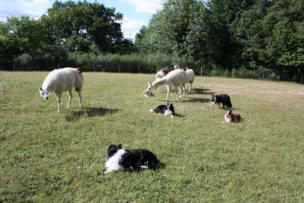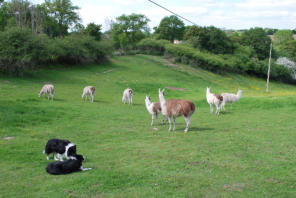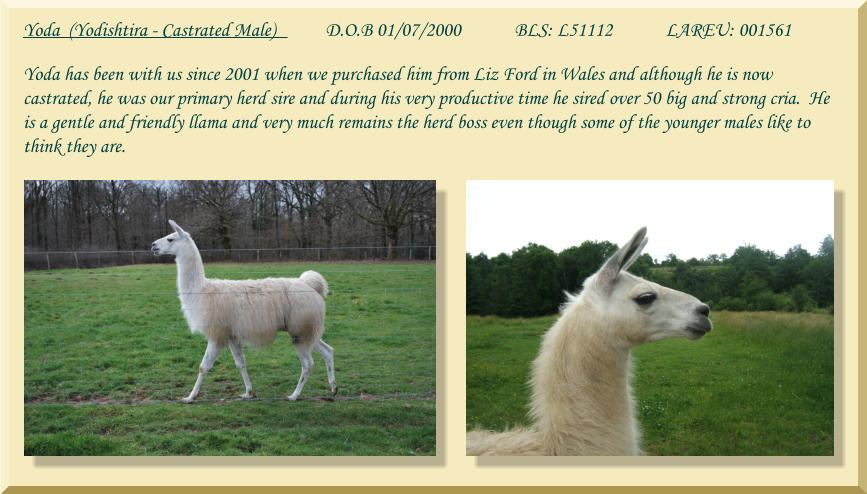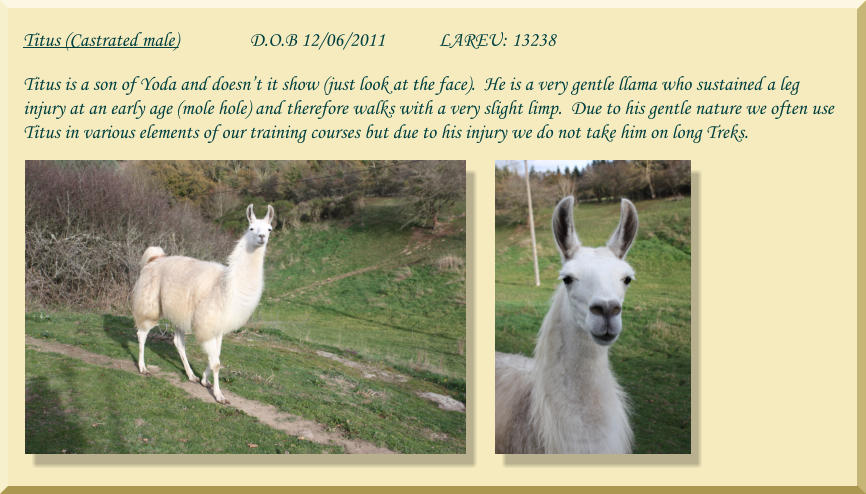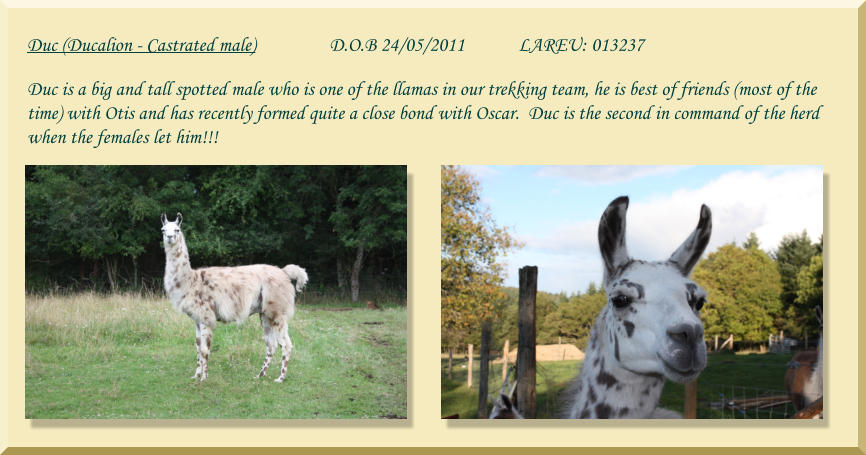
Copyright © 2016 BorderLlamas (The content of this web site may not be copied or reproduced without the express permission of the owner).

Our Llamas

Llama Trekking in France, Llama Training Courses in France & Smallholding Courses in France
St Bonnet, 03210 Noyant d'Allier, Allier, France
Tel: 00 33 (0)470 20 9504 Mobile: 00 33 (0)679 502669 Email: Michael@BorderLlamas.com

Although we are retired from professional llama breeding and now focus on
llama trekking and llama training, we have thoroughly enjoyed breeding,
rearing and training llamas over the past 16 years. At one time we had 30
llamas but now we maintain a small herd of castrated male and female
llamas which we use primarily for trekking and training.
Llamas are by nature very inquisitive animals and will often follow us and
our dogs all round the fields when we are working to check what we are
doing. They communicate by humming gently to each other and should
something warrant attention they will sound an alarm call to alert the whole
herd.
We get a an enormous amount of pleasure from just sitting and watching the llamas go about their daily routines (they are
very much animals that like to follow a set routine). It is lovely to watch when the cria (babies) are a couple of days old
and realise they can run and so they will suddenly dash all over the fields at full pelt just for the fun of it, or when the
slightly older cria decide they want to play with the adults and jump up at them as they are grazing and tease them
mercilessly until they play with them which can result in the whole herd, young and old alike, running round the fields
enjoying themselves. Or, when the sun starts to set and the young cria all sit down next to their mums and all hum softly
to each other to provide reassurance that all is well with their world.
Apart from being an enjoyable and relaxing pastime, spending a lot of time
watching the llamas also provides us with a wealth of invaluable
information as to the state of the herd as a whole, any changes in behavioural
patterns of any individuals, the status of individual males and females
within the herd, and very importantly it also allows us to spot any potential
health issues and injuries very quickly.
All our llamas are of the Ccara and Curaca type (commonly know as Classic
llamas) and have short or medium length coats. Whilst many people see long
and/or heavily fibred coats of the Tampada and Lanuda type as desirable, these coats can take an enormous amount of
time to maintain and keep in good condition and in most cases, unless shorn, this means that the llama can be more prone
to overheating in the hot summer months of France and particularly if being used for trekking with a pack (due to the
pack and restraining straps compacting the fibre against the llamas body and not allowing the loose fibres and air to
create a natural barrier against the heat and the underside of the body to expel body heat. Our ex-stud male Yoda who is
a typical classic, has never had to be shorn in over 17 years even when temperatures here have reach as high as almost 40
degrees.
We hope that when you visit or stay with us, you will derive as much pleasure as we do from watching and interacting
with the llamas here.
Thank you for visiting our web site, we hope you enjoy and benefit from the information and pictures provided for your
pleasure.

